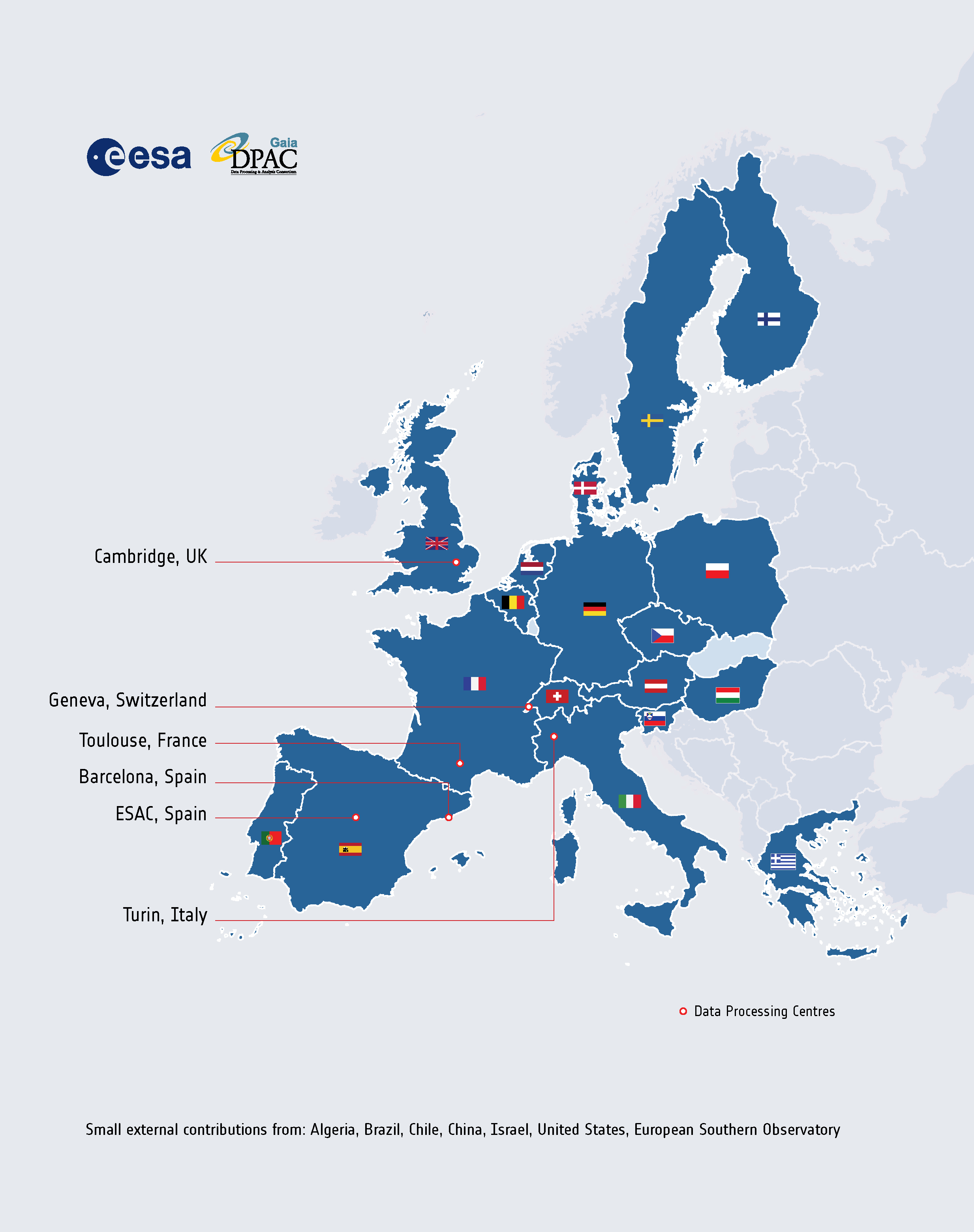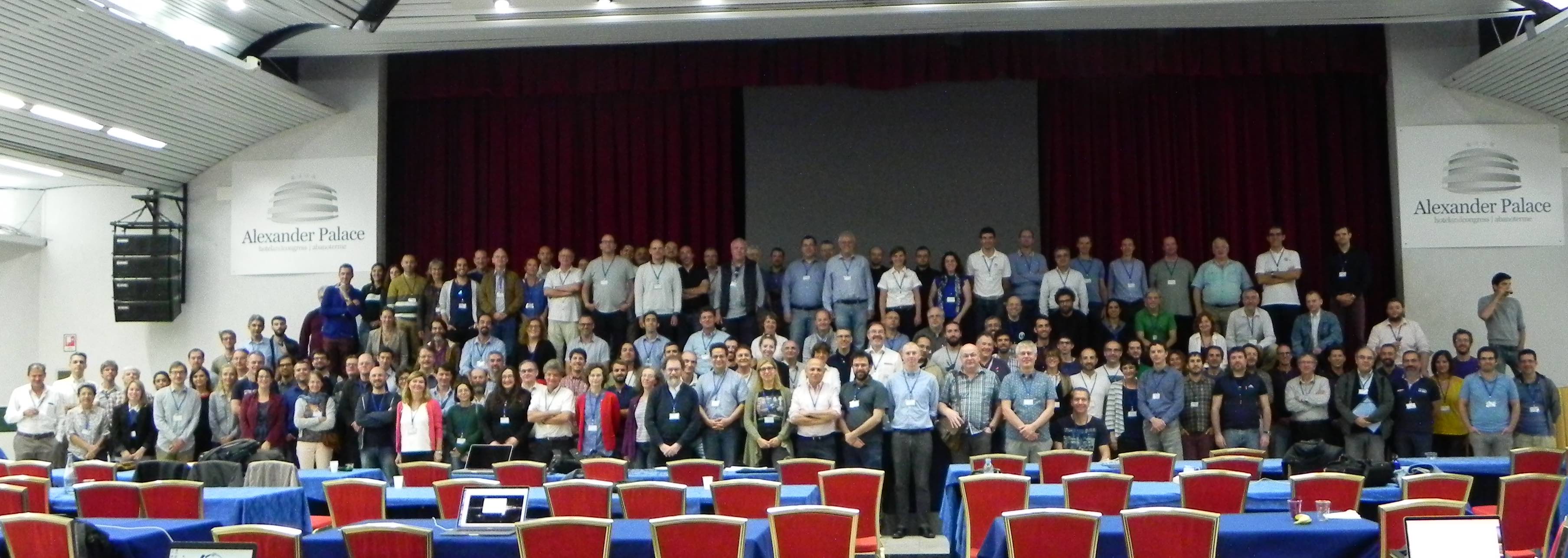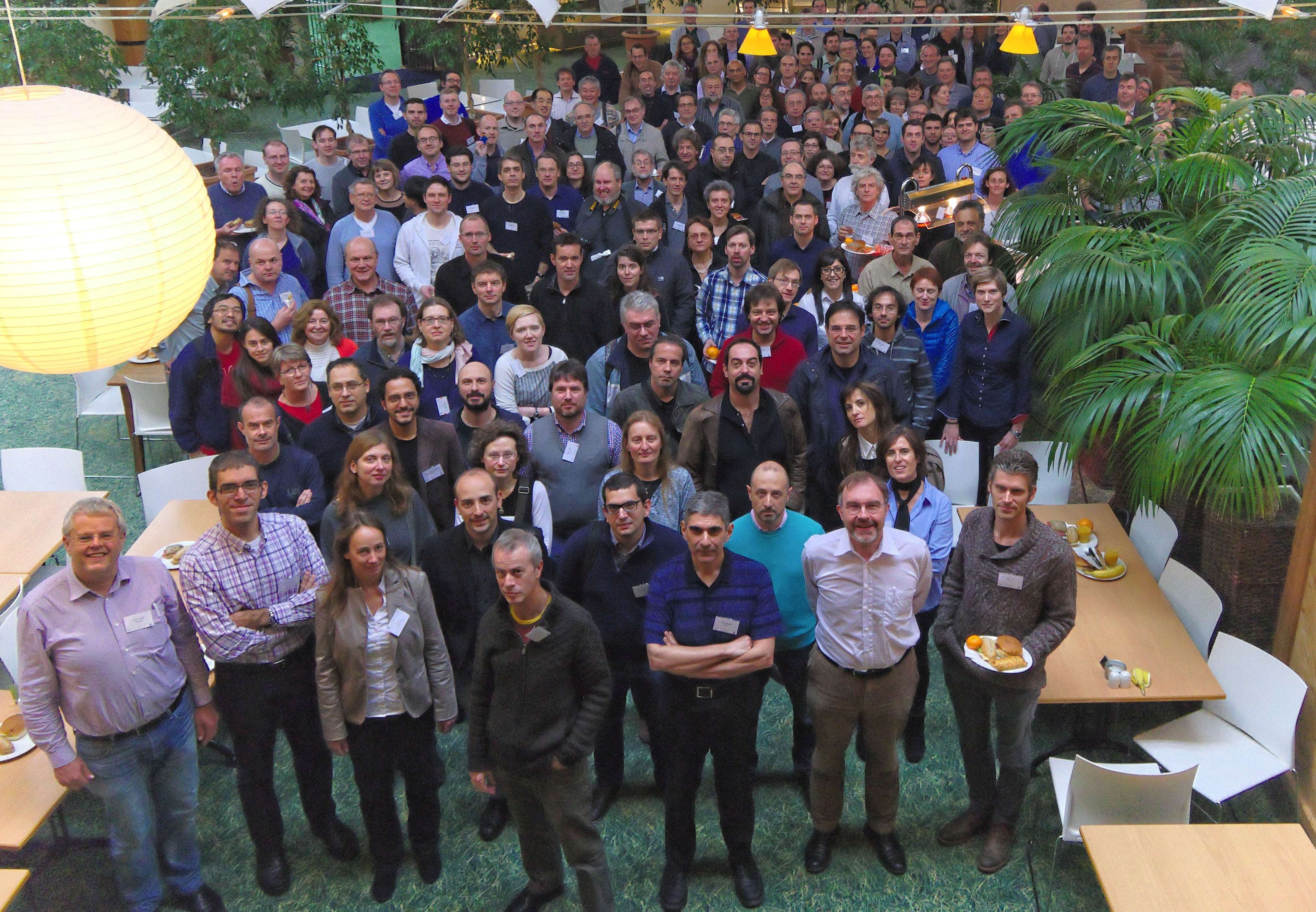IoW_20190425 - Gaia
Image of the Week |
|
Geographic contributions to DPAC |
|
 |
|
|
A map showing the geographic contributions to the Gaia Data Processing and Analysis Consortium. This map was created based on data of 2018. (Image credit: ESA/Gaia/DPAC) |
|
|
Today marks the first birthday of our Gaia Data Release 2, a data release that truly changed our view of the Milky Way. We'd like to celebrate this day with a special thank you to all the people involved in all stages of Gaia's life: from initial proposal, to gathering interest, to design and building and actual operating of the spacecraft. From getting the data down, checking the health of the data, to processing the raw data into a scientifically usable format and then validating to make sure the data is truly that great! In the above image you can see the geographic contributions to the Gaia Data Processing and Analysis Consortium. It shows the countries where the people in DPAC are working. DPAC is a pan-European team of expert scientists and software developers responsible for the processing of Gaia's data with the final objective of producing the Gaia Catalogue. Interested to see who has been and is involved in the Gaia mission? Check out the authors of the Gaia mission paper, which lists the people involved in the proposal, design and building of the Gaia spacecraft as well as the people involved in setting up the data processing and building the initial data processing pipelines. The Gaia Data Release 1 paper gives you an overview of the people involved in making Gaia Data Release 1 possible, and the Gaia Data Release 2 paper gives you a list of the people involved in the preparation of Gaia Data Release 2. The above credits we give to our Gaia and Gaia DPAC members are important to us and we hope you acknowledge their effort to make the data available by following our credit instructions. When using Gaia data, we ask you to credit the mission paper so that all people that made Gaia possible are acknowledged for their work, and we ask you to credit the specific Gaia Data Release paper so that the people that were involved in producing that data release get the appropriate recognition. Further acknowledgements can be found from the data release documentation. The acknowledgements give you an overview of the funding and financial support needed to make Gaia Data Releases possible. Have a look here for Gaia Data Release 1 acknowledgements and here for Gaia Data Release 2 acknowledgements. More than 1000 peer-reviewed papers appeared using Gaia Data Release 2. Also taking into account preprint papers, already more than 1200 papers appeared based on Gaia DR2 data. An overview of all peer-reviewed papers related to the Gaia mission and using Gaia data can be found from our publications page. From 8 to 12 April a symposium was dedicated to Gaia science, a summary of the 53rd ESLAB symposium "the Gaia universe" can be found here. From proposal to today, Gaia and Gaia people are already on a journey since 1993:
Interested to learn about what is coming up in the future releases? Or interested on all updates on the Gaia mission and Gaia data releases? Sign up for our Gaia newsletter or visit the homepage of this website (the Gaia Scientific Community website) which keeps you posted on the newest info from the Gaia mission. Feeling nostalgic? Read through the in-depth stories that came out on 25 April 2018, have a look at the Gaia Data Release 2 overview page or check out the Gaia skymaps that were released one year ago! More resources that were released on 25 April 2018 can be found at the bottom of the Gaia Data Release 2 page. Below group pictures of the three past Gaia DPAC consortium meetings are given. The fourth Gaia DPAC Consortium meeting is already planned for spring 2020, with DPAC hard at work towards the third data release.
|
|
|
Group picture of the 3rd Gaia DPAC Consortium meeting, held from 1-5 October 2018 in Abano Terme, Italy. Image credit: ESA/Gaia/DPAC, D. Bossini, A. Vallenari, R. Sordo
|
|
|
Participants of the 2nd DPAC Consortium Meeting, which was held in January 2017 in Sitges, Spain. Image credit: ESA/Gaia/DPAC, E.Masana DPAC members coming together at the first DPAC Consortium meeting in Leiden in November 2015. Image credit: ESA/Gaia/DPAC
Thanks to all of Gaia and Gaia DPAC for their work in making the Gaia data releases possible!
|
|
|
Credits: ESA/Gaia/DPAC [Published: 25/04/2019] |
- Removed a total of (9) style text-align:center;
- Removed a total of (34) style text-align:justify;
- Removed a total of (1) border attribute.
- Removed a total of (1) cellpadding attribute.
- Removed a total of (1) cellspacing attribute.
Image of the Week Archive
- Removed a total of (1) border attribute.
- Removed a total of (1) cellpadding attribute.
- Removed a total of (1) cellspacing attribute.








































 Sign in
Sign in
 Science & Technology
Science & Technology


